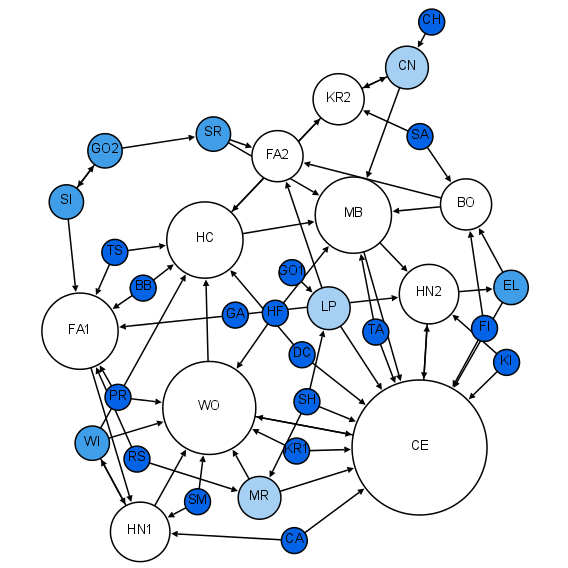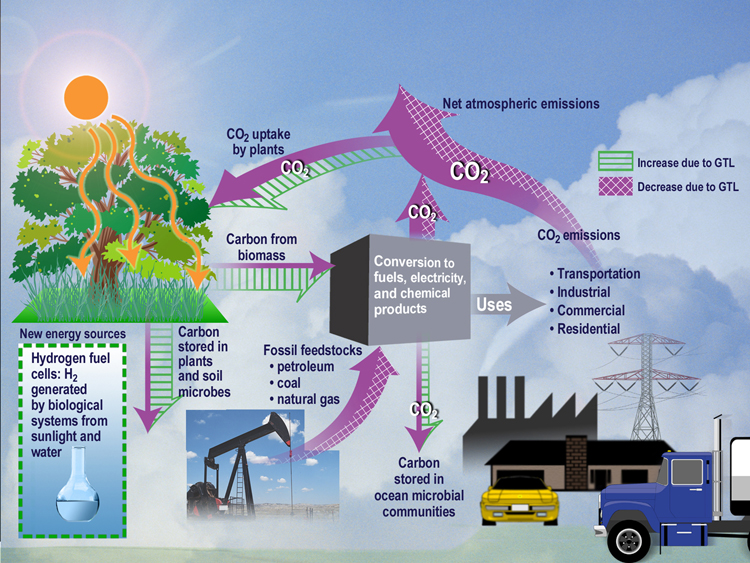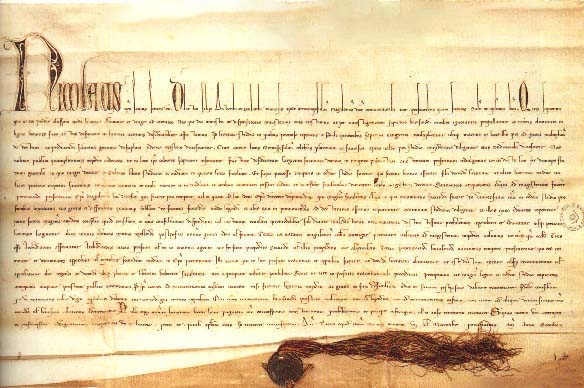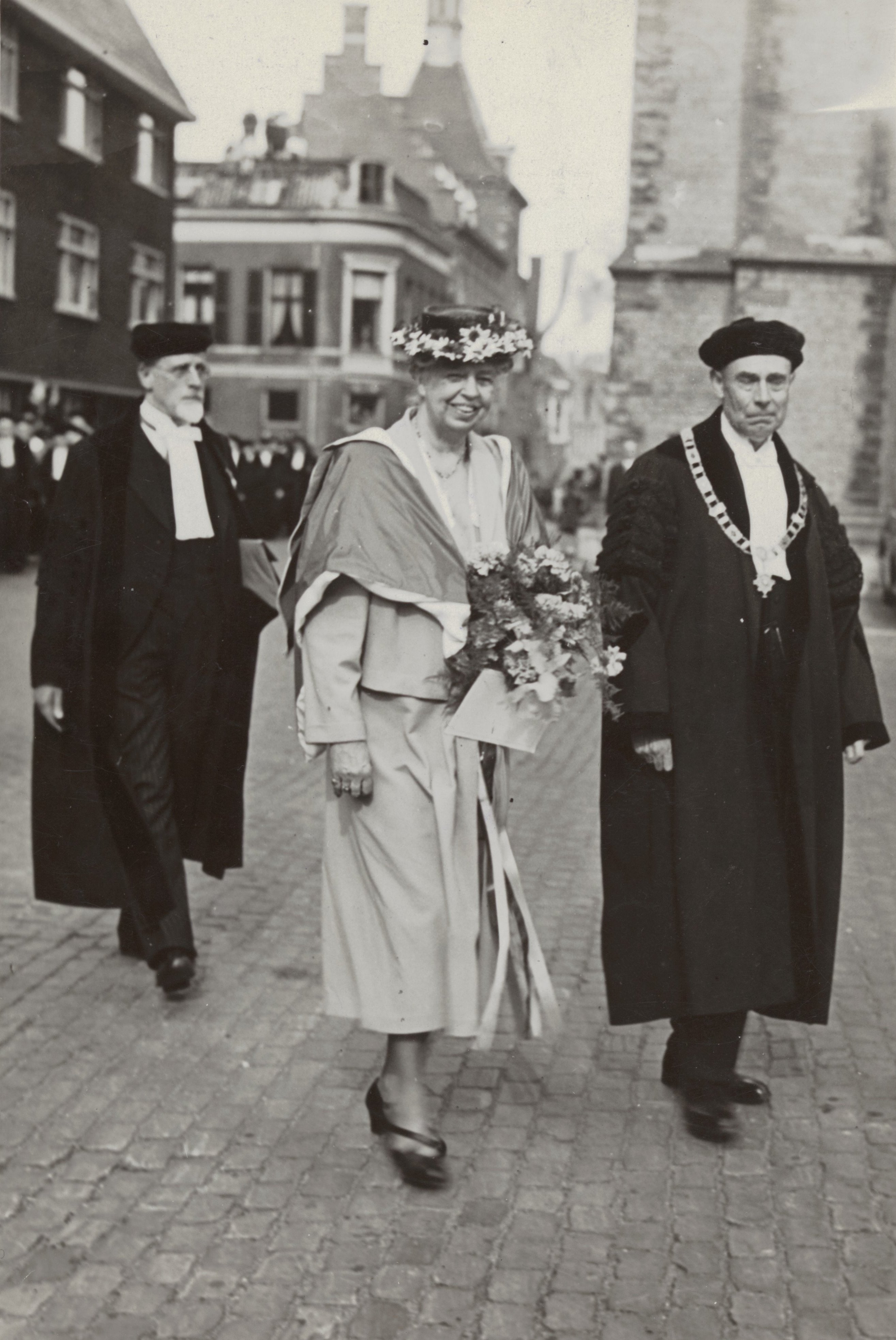|
Sonia Kéfi
Sonia Kéfi is a network scientist and systems ecologist who studies ecosystem dynamics and the resilience of ecosystems to climate change and human land use. She works for the French National Centre for Scientific Research (CNRS) in the Institut des Sciences de l’Evolution de Montpellier, associated with the University of Montpellier, and is also affiliated as an external professor with the Santa Fe Institute. Education and career Kéfi earned her Ph.D. in 2008 from Utrecht University in the Netherlands, and then did postdoctoral research as a Humboldt Fellow at Technische Universität Darmstadt in Germany before joining CNRS in 2011. Recognition Kéfi won the 2011 of the Koninklijke Hollandsche Maatschappij der Wetenschappen (Royal Holland Society of Sciences and Humanities). She won the CNRS Bronze Medal in 2017, and the Erdős–Rényi Prize The Erdős–Rényi Prize of the Network Science Society is named for Paul Erdős and Alfréd Rényi. This international prize is ... [...More Info...] [...Related Items...] OR: [Wikipedia] [Google] [Baidu] |
Network Science
Network science is an academic field which studies complex networks such as telecommunication networks, computer networks, biological networks, cognitive and semantic networks, and social networks, considering distinct elements or actors represented by ''nodes'' (or ''vertices'') and the connections between the elements or actors as ''links'' (or ''edges''). The field draws on theories and methods including graph theory from mathematics, statistical mechanics from physics, data mining and information visualization from computer science, inferential modeling from statistics, and social structure from sociology. The United States National Research Council defines network science as "the study of network representations of physical, biological, and social phenomena leading to predictive models of these phenomena." Background and history The study of networks has emerged in diverse disciplines as a means of analyzing complex relational data. The earliest known paper in this ... [...More Info...] [...Related Items...] OR: [Wikipedia] [Google] [Baidu] |
Systems Ecology
Systems ecology is an interdisciplinary field of ecology, a subset of Earth system science, that takes a holism, holistic approach to the study of ecological systems, especially ecosystems. Systems ecology can be seen as an application of general systems theory to ecology. Central to the systems ecology approach is the idea that an ecosystem is a complex system exhibiting emergent properties. Systems ecology focuses on interactions and transactions within and between biological and ecological systems, and is especially concerned with the way the functioning of ecosystems can be influenced by human interventions. It uses and extends concepts from thermodynamics and develops other macroscopic descriptions of complex systems. Overview Systems ecology seeks a Holism, holistic view of the interactions and transactions within and between biological and ecological systems. Systems ecologists realise that the function of any ecosystem can be influenced by human economics in fundamental ... [...More Info...] [...Related Items...] OR: [Wikipedia] [Google] [Baidu] |
French National Centre For Scientific Research
The French National Centre for Scientific Research (french: link=no, Centre national de la recherche scientifique, CNRS) is the French state research organisation and is the largest fundamental science agency in Europe. In 2016, it employed 31,637 staff, including 11,137 tenured researchers, 13,415 engineers and technical staff, and 7,085 contractual workers. It is headquartered in Paris and has administrative offices in Brussels, Beijing, Tokyo, Singapore, Washington, D.C., Bonn, Moscow, Tunis, Johannesburg, Santiago de Chile, Israel, and New Delhi. From 2009 to 2016, the CNRS was ranked No. 1 worldwide by the SCImago Institutions Rankings (SIR), an international ranking of research-focused institutions, including universities, national research centers, and companies such as Facebook or Google. The CNRS ranked No. 2 between 2017 and 2021, then No. 3 in 2022 in the same SIR, after the Chinese Academy of Sciences and before universities such as Harvard University, MIT, or Stanf ... [...More Info...] [...Related Items...] OR: [Wikipedia] [Google] [Baidu] |
University Of Montpellier
The University of Montpellier (french: Université de Montpellier) is a public research university located in Montpellier, in south-east of France. Established in 1220, the University of Montpellier is one of the oldest universities in the world. The university was split into three universities (the University of Montpellier 1, the University of Montpellier 2 and the Paul Valéry University Montpellier 3) for 45 years from 1970 until 2015 when it was subsequently reunified by the merger of the two former, with the latter, now named Paul Valéry University, Montpellier III remaining a separate entity. History The university is considerably older than its formal founding date, associated with a papal bull issued by Pope Nicholas IV in 1289, combining all the centuries-old schools into a university, but the first statutes were given by Conrad of Urach in 1220. It is not known exactly when the schools of liberal arts were founded that developed into the Montpellier faculty o ... [...More Info...] [...Related Items...] OR: [Wikipedia] [Google] [Baidu] |
Santa Fe Institute
The Santa Fe Institute (SFI) is an independent, nonprofit theoretical research institute located in Santa Fe, New Mexico, United States and dedicated to the multidisciplinary study of the fundamental principles of complex adaptive systems, including physical, computational, biological, and social systems. The institute is ranked 24th among the world's "Top Science and Technology Think Tanks" and 24th among the world's "Best Transdisciplinary Research Think Tanks" according to the 2020 edition of the ''Global Go To Think Tank Index Reports'', published annually by the University of Pennsylvania. The institute consists of a small number of resident faculty and postdoctoral researchers, a large group of external faculty whose primary appointments are at other institutions, and a number of visiting scholars. The institute is advised by a group of eminent scholars, including several Nobel Prize-winning scientists. Although theoretical scientific research is the institute's primary foc ... [...More Info...] [...Related Items...] OR: [Wikipedia] [Google] [Baidu] |
Utrecht University
Utrecht University (UU; nl, Universiteit Utrecht, formerly ''Rijksuniversiteit Utrecht'') is a public research university in Utrecht, Netherlands. Established , it is one of the oldest universities in the Netherlands. In 2018, it had an enrollment of 31,801 students, and employed 7,191 faculty and staff. In 2018, 525 PhD degrees were awarded and 6,948 scientific articles were published. The 2018 budget of the university was €857 million. Utrecht University counts a number of distinguished scholars among its alumni and faculty, including 12 Nobel Prize laureates and 13 Spinoza Prize laureates. Utrecht University has been placed consistently in the top 100 universities in the world by prominent international ranking tables. The university is ranked as the best university in the Netherlands by the Shanghai Ranking of World Universities 2022, ranked 14th in Europe and 54th in the world. The university's motto is "Sol Iustitiae Illustra Nos", which means ''May the Sun of Righteo ... [...More Info...] [...Related Items...] OR: [Wikipedia] [Google] [Baidu] |
Humboldt Fellow
The Alexander von Humboldt Foundation (german: Alexander von Humboldt-Stiftung) is a foundation established by the government of the Federal Republic of Germany and funded by the Federal Foreign Office, the Federal Ministry of Education and Research, the Federal Ministry for Economic Cooperation and Development as well as other national and international partners; it promotes international academic cooperation between excellent scientists and scholars from Germany and from abroad. Description Every year, the Foundation grants more than 700 competitive research fellowships and awards, primarily going to academics from natural sciences ( mathematics included) and the humanities. It allows scientists and scholars from all over the world to come to Germany to work on a research project they have chosen themselves together with a host and collaborative partner. Additionally it funds German scholars' via the Feodor Lynen Fellowships to go anywhere in the world to work on a research pro ... [...More Info...] [...Related Items...] OR: [Wikipedia] [Google] [Baidu] |
Technische Universität Darmstadt
The Technische Universität Darmstadt (official English name Technical University of Darmstadt, sometimes also referred to as Darmstadt University of Technology), commonly known as TU Darmstadt, is a research university in the city of Darmstadt, Germany. It was founded in 1877 and received the right to award doctorates in 1899. In 1882, it was the first university in the world to set up a chair in electrical engineering. In 1883, the university founded the first faculty of electrical engineering and introduced the world's first degree course in electrical engineering.History of the department of Electrical Engineering: (German) In 2004, it became the first German university to be declared as an autonomous university. TU Darmstadt has assumed a pioneering role in Germany. Computer science, electrical engineering, artificial intelligence, mechatronics, business informatics, political science and many more courses were introduced as scientific disciplines in Germany by Darmsta ... [...More Info...] [...Related Items...] OR: [Wikipedia] [Google] [Baidu] |
Koninklijke Hollandsche Maatschappij Der Wetenschappen
The Koninklijke Hollandsche Maatschappij der Wetenschappen (Royal Holland Society of Sciences and Humanities), located on the east side of the Spaarne in downtown Haarlem, Netherlands, was established in 1752 and is the oldest society for the sciences in the country. The society has been housed in its present location, called Hodshon Huis, since 1841. Nearby the society is the Teylers Museum, a closely related museum of natural history founded in 1784. In 2002 the society was awarded the predicate "Royal" when it celebrated 250 years of science studies. History of the society and museum The society started as a gentleman's club that met in the Haarlem City Hall to discuss science topics and promote the study of the arts and sciences. They pooled resources to purchase books and specimens for study, which were kept in the town hall until they purchased a building on the Grote Houtstraat (nr. 51, since unrecognizably rebuilt), where the curator of the collection lived. Under the d ... [...More Info...] [...Related Items...] OR: [Wikipedia] [Google] [Baidu] |
Erdős–Rényi Prize
The Erdős–Rényi Prize of the Network Science Society is named for Paul Erdős and Alfréd Rényi. This international prize is awarded annually in a special ceremony at the International Conference on Network Science to an outstanding early-career researcher in the field of network science. Past recipients include: * 2012: Roger Guimera, Rovira i Virgili University, for work on the "analysis of network cartography and community identification". * 2013: Adilson E. Motter, Northwestern University, for work on "synchronization phenomena"." * 2014: Mason A. Porter, University of Oxford, for research in the "mathematics of networks". * 2015: Chaoming Song, University of Miami, for work including the application of "self-similarity and renormalization group theory" to networks. * 2016: Aaron Clauset, University of Colorado Boulder, for work on the structure of networks. * 2017: Vittoria Colizza, Inserm, for research into "network-based modeling of epidemic processes". * 2018: Da ... [...More Info...] [...Related Items...] OR: [Wikipedia] [Google] [Baidu] |
Year Of Birth Missing (living People)
A year or annus is the orbital period of a planetary body, for example, the Earth, moving in its orbit around the Sun. Due to the Earth's axial tilt, the course of a year sees the passing of the seasons, marked by change in weather, the hours of daylight, and, consequently, vegetation and soil fertility. In temperate and subpolar regions around the planet, four seasons are generally recognized: spring, summer, autumn and winter. In tropical and subtropical regions, several geographical sectors do not present defined seasons; but in the seasonal tropics, the annual wet and dry seasons are recognized and tracked. A calendar year is an approximation of the number of days of the Earth's orbital period, as counted in a given calendar. The Gregorian calendar, or modern calendar, presents its calendar year to be either a common year of 365 days or a leap year of 366 days, as do the Julian calendars. For the Gregorian calendar, the average length of the calendar yea ... [...More Info...] [...Related Items...] OR: [Wikipedia] [Google] [Baidu] |


.jpg)




.jpg)

